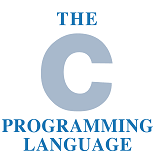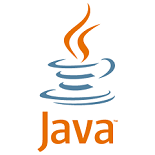- Home
- Course Category
- Course Result
- Course Detail
Hot Line: 0124-2383121
Course Introduction
Polymorphism
The word polymorphism means having many forms. In simple words, we can define polymorphism as the ability of a message to be displayed in more than one form.
Real life example of polymorphism, a person at a same time can have different characteristic. Like a man at a same time is a father, a husband, a employee. So a same person posses have different behavior in different situations. This is called polymorphism.
Polymorphism is considered as one of the important features of Object Oriented Programming.
In C++ polymorphism is mainly divided into two types:
-
Compile time polymorphism: This type of polymorphism is achieved by function overloading or operator overloading.
-
a) Function Overloading: When there are multiple functions with same name but different parameters then these functions are said to be overloaded. Functions can be overloaded by change in number of arguments or/and change in type of arguments.
b)Operator Overloading: C++ also provide option to overload operators. For example, we can make the operator (‘+’) for string class to concatenate two strings. We know that this is the addition operator whose task is to add to operands. So a single operator ‘+’ when placed between integer operands , adds them and when placed between string operands, concatenates them.
Source Code: Polymorphism
/* C++ Program - polymorphism */ #include <iostream> using namespace std; class Shape { protected: int width, height; public: Shape( int a = 0, int b = 0){ width = a; height = b; } int area() { cout << "Parent class area :" <<endl; return 0; } }; class Rectangle: public Shape { public: Rectangle( int a = 0, int b = 0):Shape(a, b) { } int area () { cout << "Rectangle class area :" <<endl; return (width * height); } }; class Triangle: public Shape { public: Triangle( int a = 0, int b = 0):Shape(a, b) { } int area () { cout << "Triangle class area :" <<endl; return (width * height / 2); } }; // Main function for the program int main() { Shape *shape; Rectangle rec(10,7); Triangle tri(10,5); // store the address of Rectangle shape = &rec; // call rectangle area. shape->area(); // store the address of Triangle shape = &tri; // call triangle area. shape->area(); return 0; }When the above code is compiled and executed, it produces the following result −
Parent class area : Parent class area :
The reason for the incorrect output is that the call of the function area() is being set once by the compiler as the version defined in the base class. This is called static resolution of the function call, or static linkage - the function call is fixed before the program is executed. This is also sometimes called early binding because the area() function is set during the compilation of the program.
But now, let's make a slight modification in our program and precede the declaration of area() in the Shape class with the keyword virtual so that it looks like this −
class Shape { protected: int width, height; public: Shape( int a = 0, int b = 0) { width = a; height = b; } virtual int area() { cout << "Parent class area :" <<endl; return 0; } };After this slight modification, when the previous example code is compiled and executed, it produces the following result −
Rectangle class area Triangle class area
This time, the compiler looks at the contents of the pointer instead of it's type. Hence, since addresses of objects of tri and rec classes are stored in *shape the respective area() function is called.
As you can see, each of the child classes has a separate implementation for the function area(). This is how polymorphism is generally used. You have different classes with a function of the same name, and even the same parameters, but with different implementations.
Virtual Function
A virtual function is a function in a base class that is declared using the keyword virtual. Defining in a base class a virtual function, with another version in a derived class, signals to the compiler that we don't want static linkage for this function.
What we do want is the selection of the function to be called at any given point in the program to be based on the kind of object for which it is called. This sort of operation is referred to as dynamic linkage, or late binding.
Pure Virtual Functions
It is possible that you want to include a virtual function in a base class so that it may be redefined in a derived class to suit the objects of that class, but that there is no meaningful definition you could give for the function in the base class.
We can change the virtual function area() in the base class to the following −
class Shape { protected: int width, height; public: Shape(int a = 0, int b = 0) { width = a; height = b; } // pure virtual function virtual int area() = 0; };The = 0 tells the compiler that the function has no body and above virtual function will be called pure virtual function.
Other Object Oriented Programming concepts
-
a) Function Overloading: When there are multiple functions with same name but different parameters then these functions are said to be overloaded. Functions can be overloaded by change in number of arguments or/and change in type of arguments.







